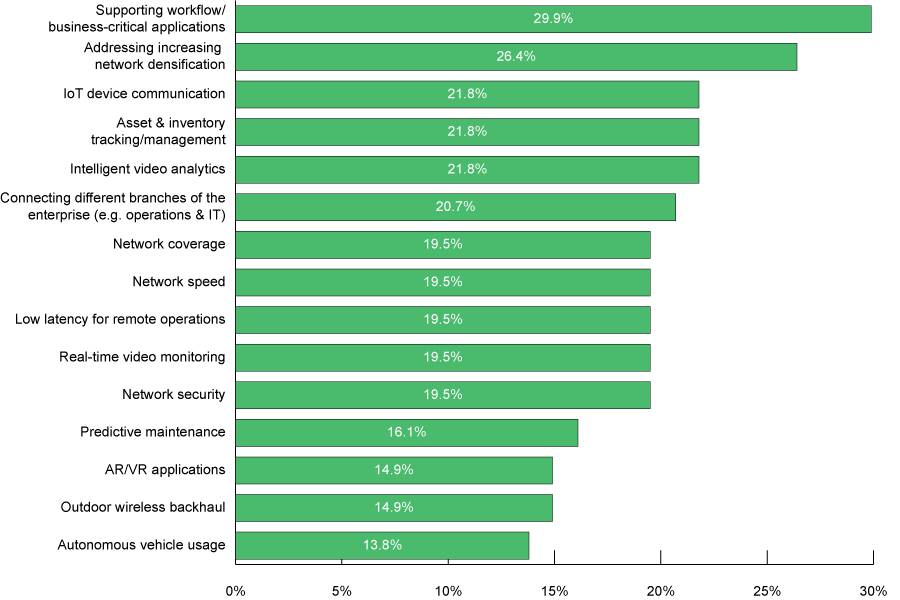Enterprise Mobility & the Connected Worker Blog
Keeping Up with the Future: Wi-Fi 7 Sees New Advancements Shortly After Release
by Rowan Litter | 3/5/2024
At the beginning of 2024, the Wi-Fi Alliance® officially announced Wi-Fi CERTIFIED 7™. Wi-Fi 7 technology has been tested by connectivity solution providers for some time now, but this new announcement has signaled the market’s readiness for mass adoption and deployment of Wi-Fi 7 devices in 2024; the earliest adopters of this technology include smartphones, PCs, tablets, and access points, soon to be followed by wearable equipment. The introduction of Wi-Fi 6E in 2021 was revolutionary in advancing Wi-Fi capabilities, opening support for the 6 GHz band that was previously unavailable, offering greater capacity and throughput. Wi-Fi 7 builds on the 6 GHz band availability by supporting 320 MHz channels that will enable use cases on Wi-Fi such as AR/VR/XR, immersive 3D training, and industrial IoT capabilities. Other benefits include Multi-Link Operation (MLO), which enables end-user clients to connect to access points through multiple bands simultaneously, increasing throughput, reducing latency, and improving reliability. These improvements in Wi-Fi capabilities address the top use cases indicated by enterprise decision-makers with Wi-Fi network deployments, which are supporting workflow/business-critical applications (29.9%), addressing increasing network densification (26.4%), and IoT device communication (21.8%).
What are the top 3 use cases utilized by your wireless network for your organization?

From VDC Research’s Private 5G and 4G/LTE Networks: Total Cost of Ownership Analysis (N=87)
As alternative networking technologies, such as private wireless, take hold in the enterprise and offer cost-effective solutions to the shortcomings of traditional Wi-Fi networks, the Wi-Fi alliance is responding with advanced features that are addressing previous inefficiencies and garnering new interest. While AI was the main theme at MWC Barcelona last week, Wi-Fi technology was not exempt from the hype. There were major announcements by big names in the enterprise connectivity world centering around the integration of AI, including with Wi-Fi 7. For one, Qualcomm announced the company’s new FastConnect 7900 Wi-Fi solution which touts on-device trained AI models that can analyze and optimize connectivity KPIs like latency and bandwidth in real-time to serve use cases like streaming and quality of service, all while reducing power usage. Although Wi-Fi 7 already brings more bandwidth, lower latency and wider coverage, integrating AI into these solutions helps reallocate throughput speeds and connectivity configurations automatically depending on the use case or application being utilized. Also announced at MWC, Quectel released a portfolio of Wi-Fi 7 modules that are ideal for PC OEMs which run on Intel, AMD x86, and Qualcomm Snapdragon X Elite platforms for Windows PC. Numerous other vendors showcased their new Wi-Fi 7 gateways and extenders which will enable connectivity for IoT devices and business-critical use cases.
Despite these exciting announcements and fast-paced releases, Wi-Fi 7 equipment is in its infancy and therefore very expensive and not yet supported by most client devices. In addition, Wi-Fi 7 technology is built on the advances of Wi-Fi 6E that opened the 6 GHz band; many regions around the world chose not to support this move, limiting the potential footprint of 6E for now. From a client device OEM perspective, investing more in features that are not available across their entire global footprint does not prove overly beneficial, so mass adoption and device-enablement will take time. As adoption progresses PCs, tablets and smartphones will be the early users of Wi-Fi 7. Other more use case-specific devices may follow suit, but these advancements beg the question of the complementary relationship between Wi-Fi and the increasingly popular private cellular solutions.
Further discussion about enterprise Wi-Fi and other wireless technologies are featured in VDC’s Private 5G and 4G/LTE Networks: Total Cost of Ownership Analysis, which examines trends and analyzes cost considerations for multiple wireless network options.